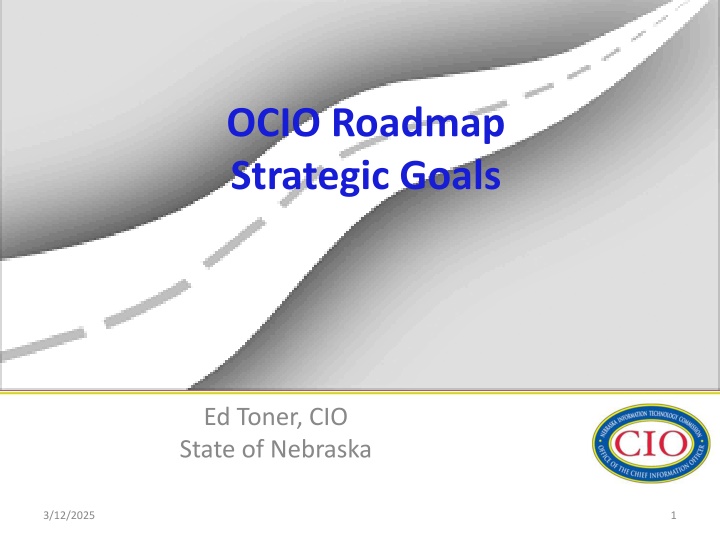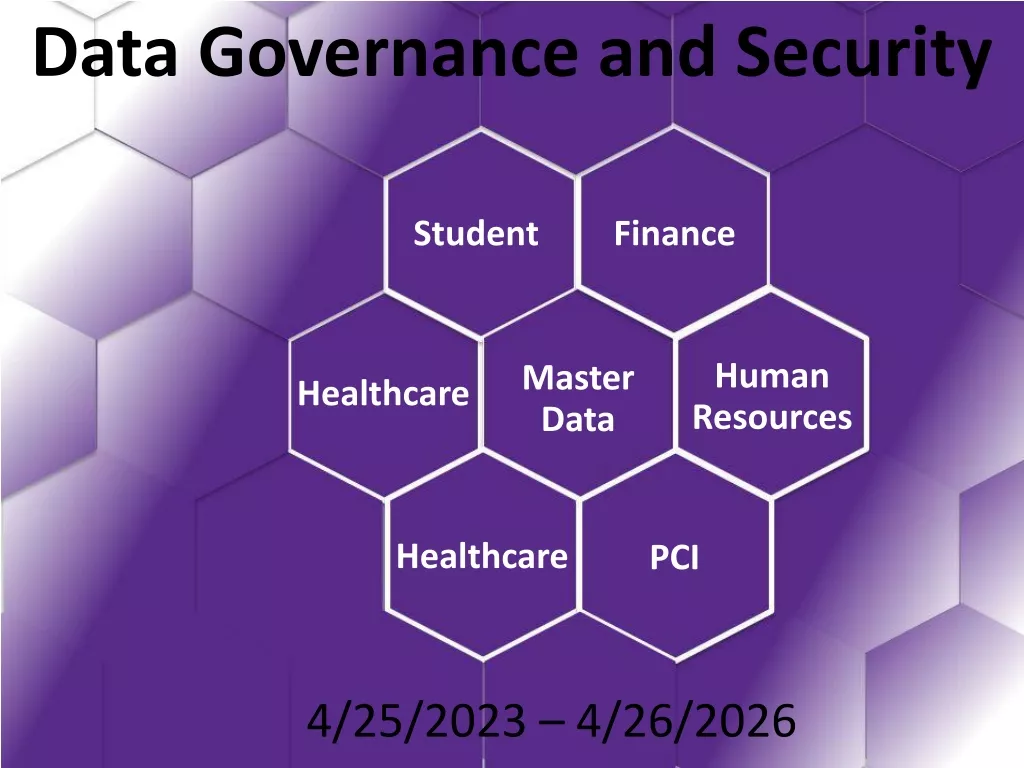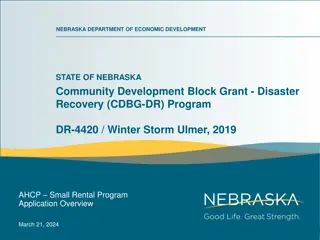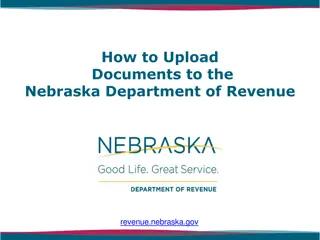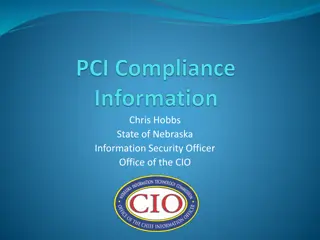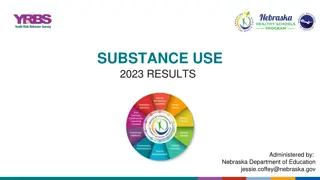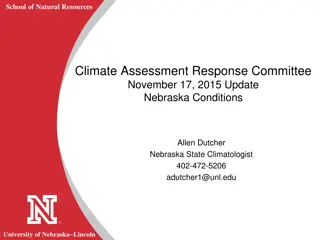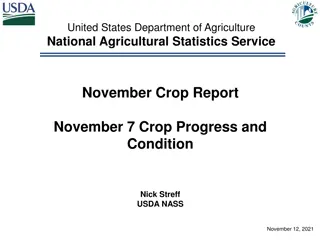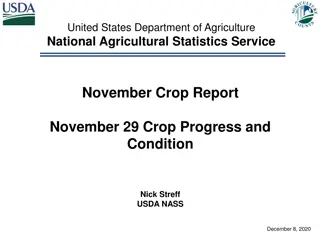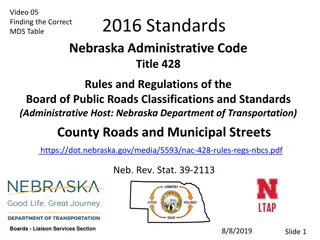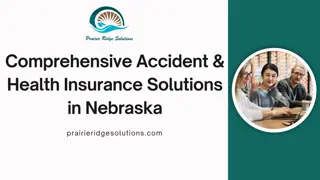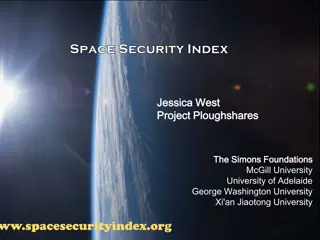State of Nebraska IT Governance & Security Analysis
The State of Nebraska currently faces challenges with its decentralized IT structure, leading to inefficiencies and security risks. The analysis explores the benefits of centralization and proposes a Hybrid Centralization Model for improved governance and security.
Download Presentation

Please find below an Image/Link to download the presentation.
The content on the website is provided AS IS for your information and personal use only. It may not be sold, licensed, or shared on other websites without obtaining consent from the author.If you encounter any issues during the download, it is possible that the publisher has removed the file from their server.
You are allowed to download the files provided on this website for personal or commercial use, subject to the condition that they are used lawfully. All files are the property of their respective owners.
The content on the website is provided AS IS for your information and personal use only. It may not be sold, licensed, or shared on other websites without obtaining consent from the author.
E N D
Presentation Transcript
OCIO Roadmap Strategic Goals Ed Toner, CIO State of Nebraska 3/12/2025 1
Current IT Environment State of Nebraska The majority of agencies manage their IT functions as an independent department within the Agency. Security guidelines are in place from the NITC. These guidelines lack enforcement and validation. This invites Info Security risks by design. This decentralized approach to both Security and Technology comes at higher expense as IT fails to optimize resources across the enterprise and fosters the duplication of applications and disparate infrastructure technologies with no central operational control. Current structure blocks basic efficiencies and risk mitigation by inhibiting automated server management, maintenance, alerting and security monitoring. 3/12/2025 2
Security Mission: Respect for the Taxpayers of the State of Nebraska Optimize Centralize Values: Aspire High aspirations for self and others Respect Build mutual respect among and across teams Create Innovative ways to provide solutions for our customers Serve- Exceptional service to our customers Consolidation Availability Standardize 3/12/2025 3
Centralized Vs. Decentralized Decentralized IT Advantages: agile and responsive, in tune with the needs of the agency, and more tightly integrated with business goals and objectives. Disadvantages: duplication of effort, lack of standards across the organization, islands of excellence, higher total procurement and operational costs, lack of integration. Centralized IT Advantages: reduces the Enterprise technology footprint lowering storage, networks, power use and cooling costs. Reduces hardware and software licensing costs; improves staff utilization. Centralizing functions reduces overall risk and complexity. Greater adherence to security standards and a unified vision. Disadvantages: tendencies towards bureaucracy, lack of responsiveness, and decision-making in a vacuum. Often seen as less responsive to agency specific needs. 3/12/2025 4
Hybrid Centralization Model Hybrid Centralization Model OCIO Agency Enterprise functions are performed by OCIO Agency IT Management maintains authority over Agency specific activities and functions To Include: Consolidated Data Center Network and Infrastructure Operations Procurement reviews and standards Enterprise Help Desk support Enterprise application support To Include: Agency Help Desk support Agency specific application development Agency specific application support IT strategy and planning for the Agency In order for this Hybrid structure to work there has to be strong cooperative and collaborative management between OCIO and Agency IT Management 5
Security Establish a State-wide security operations center. Consolidate agency-specific security to include PII, PCI, CJIS, FTI and HIPAA compliance. Standardize security infrastructure including networking. Standardize tools for security monitoring. Identify a state-wide authority for security reporting and Governance. Establish unified security control, eliminate voluntary compliance. Implement single authentication/identity/account management. Put standards and processes in place to share and secure data within and across agencies. Enact Mobile Device Management standards and software. Establish workstation security standards. 3/12/2025 6
Consolidation Merge computer rooms/closets into existing OCIO DC s (Omaha/Lincoln). Migrate physical servers to virtual machines. Automate technology management - server administration. Institute a central governance model for technology purchases and roadmap. Identify and consolidate and/or eliminate disparate technology (HW/SW) within and across State agencies. To include enterprise software agreements. Standardize personal workstation platforms reducing complexity and cost of end user management. Consolidate IT infrastructure support staff where appropriate. Services requiring agency-specific competencies will remain at the agency. Define model and process for governance and standardization around shared services and shared infrastructure. 3/12/2025 7
Availability Centralized Monitoring control via Enhanced Operations Center. Documentation of Application support requirements, existing solutions and risk of business outage (e.g. systems requiring 24x7x365 support). Minimize number of core data processing platforms. Institutionalize use of service level agreements and performance metrics. Standardize change control currently distributed throughout agencies. Develop and publish a Total Lifecycle Management strategy, with acceptable guidelines, standards and an appropriate execution strategy. 3/12/2025 8
Primary Benefits Of Hybrid Model Enhanced Security Optimization of resources Reduced risk Transparency Significant cost reductions Remain tightly integrated with agency goals and objectives 3/12/2025 9
Implementation Plan Phase 1 The State should engage in the implementation of the master plan in three distinct but interlocked phases: Phase 1 Immediate Needs, Phase 2 Mid-Term Implementations, Phase 3 Closure and Next Steps. Phase 1 Immediate Needs (Target Completion - Calendar Year 2015) This phase has begun. Launch of stepping stones for the subsequent phases. Phase 1 initiatives include: Establish ITIL guiding principles and standards which include: 1. Single Help Desk Solution - Incident Management 2. Service Catalog 3. Change Management solution 4. Enhance Information Security 5. Enhanced Operations Center 6. IT Cost Efficiencies 7. Operationalize IT and Project Governance 8. Consolidate on STN domain 9. Initiate Data Center consolidation - Identify agency servers for migration. 10. Initiate Active/Hot Standby solution - Enterprise Apps 3/12/2025 10
Implementation Plan Phase 2 Phase 2 Mid-Term Implementations (Target Completion - Mid-year 2016) This phase will be primarily focused on successful completion of core ITIL programs. Phase 2 initiatives should include completion of: 1. Single Help Desk Solution - Incident Management 2. Service Catalog 3. Change Management solution 4. Enhance Information Security 5. Enhanced Operations Center 6. IT Cost Efficiencies 7. Operationalize IT and Project Governance 3/12/2025 11
Implementation Plan Phase 3 Phase 3 Closure and Next Steps (Target Completion- End of Year 2016) This phase will be focused on completing all major infrastructure-related projects and beginning to address leading practices adapted by industry. Phase 3 initiatives should include the completion of: 1. Consolidate on STN domain 2. Data Center consolidation - (agency server migration) 3. Initiate Active/Hot Standby solution - Enterprise Apps 4. Initiate Security Operations Center 5. Initiate Shared Services Model for Desktop Support 3/12/2025 12
Implementation Plan Phase 4 Phase 4 Next Steps and Maturity (Target Completion- Mid-Year 2017) This phase will be focused on completing infrastructure-related projects and beginning the maturity of practices adapted by industry. Phase 4 initiatives should include the completion of: 1. Complete Consolidation - STN domain 2. Data Center consolidation - (agency server migration) 3. Complete Active/Hot Standby solution - Enterprise Apps 4. Complete Security Operations Center 5. Complete Shared Services Model for Desktop Support 3/12/2025 13
Detailed Implementation Phase 1 Immediate Needs Calendar Year 2015 Phase 2-Mid-Term Implementations Mid-Year 2016 Phase 3 - Basic Needs Closure End of Year 2016 Phase 4 -Next Steps Mid-Year 2017 Jan Feb Mar OCIO Initiative Jul Aug Sep Oct Nov Dec Jan Feb Mar Apr May Jun Jul Aug Sep Oct Nov Dec Apr May Jun Single Help Desk Solution - Incident Management Service Catalog Change Management solution Enhance Information Security Enhanced Operations Center IT Cost Efficiencies Operationalize IT and Project Governance Consolidate on STN domain Data Center consolidation - (OCIO 6251 Lin/1548 DotCom) Network Migration Initiate Security Operations Center Initiate Shared Services 3/12/2025 14
